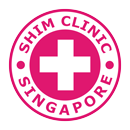The Human Immunodeficiency Virus known as HIV attacks a person’s immune system making them susceptible to infections like tuberculosis, opportunistic infections and even tumours. These are diseases that would normally not affect people with a strong immune system.
Although studies show that there is no cure for HIV, there are drugs available that can slow down the course of the disease and may help extend the life expectancy of a person infected by it.
The HIV pandemic is widespread in regions like Asia and Africa. The last five years have seen a 277% rise in HIV cases in the Philippines alone. Over 400 HIV positive cases were reported in 2007, in the Philippines. This figure rose to a staggering 2,400 cases in the year 2011. Representatives from the United Nation’s Program on HIV-AIDS in Manila, paint a gloomy picture stating that the Philippines is unlikely to meet the sixth Millennium Development Goal i.e. the goal set for reduction of HIV/AIDS.
In Africa, war-ravaged Uganda is also being crushed by the weight of HIV. Northern Uganda reportedly has the highest prevalence of HIV nationwide. A ballpark figure of 100,000 children live with HIV/AIDS in Uganda and at least half of these children reside in the Gulu district of Northern Uganda. Being the economic capital of Northern Uganda, Gulu has its own portfolio of challenges including poverty, child abuse and other health concerns.
Efforts are being made by organizations such as Opportunities Industrialization Centers (OIC) International’s Health, Nutrition & HIV/AIDS programs which educate communities regarding health issues and also provide palliative care to ensure that individuals and communities are equipped with knowledge to lead healthy lives.
Advancements in medical science have yielded two types of drugs that help counter HIV namely Pre-Exposure Prophylaxis (PrEP) and Post Exposure Prophylaxis (PEP). Truvada is a well-known antiretroviral drug. Truvada is a combination therapy because it has 2 medicines in one pill (emtricitabine and tenofovir disoproxil fumarate). Truvada is always used with other anti-HIV medicines to treat HIV-1 infection because Truvada alone is not a complete treatment. Truvada is a Pre-Exposure Prophylaxis (PrEP) drug which must be taken daily to block the transmission of HIV.
Post Exposure Prophylaxis (PEP), on the other hand is a line of HIV medication normally taken within the first 72 hours after a person is possibly exposed to the virus. PEP drugs help prevent the virus from spreading within the body. Health care workers, who have been exposed to the virus while taking care of an HIV+ patient and those that have engaged in sexual intercourse with a person with HIV need to be treated with PEP.
While medical science progresses to counter HIV anti-social elements are in play to further spread the virus and create new challenges for those working to help obliterate the deadly curse. A recent study in the US has found that HIV positive patients, faced with dire economic circumstances, are selling their HIV medications to HIV-negative people, who are using them as a preventative drug against contracting the virus. The motivating factors behind the rise of this new black market and its implications on the current status of HIV are discussed below.
Dr. Steven Kurtz from the Center for Applied Research on Substance Use and Health Disparities in Coral Gables, Florida, recently presented his research at the Conference of the Association for the Social Sciences and Humanities (ASSHH) on HIV in Stellenbosch, South Africa. ASSHH is a well reputed international membership organization geared towards promoting and supporting critically informed and theoretically engaged social science and humanities research on HIV/AIDS.
147 gay men were recruited by Doctor Steven Kurtz. These people were regular drug abusers resorting to drugs like cocaine, crack or heroin. National AIDS Manual AIDSMAP (NAM AIDSMAP) a London-based non-profit geared towards disseminating information pertaining to AIDS. NAM AIDSMAP reported that in order to gain a better understanding of the factors that caused people to trade/sell antiretroviral drugs, Kurtz deliberately over-recruited individuals that were engaged in such activities.
The study conducted by Kurtz found that people faced with dire financial situations were prime perpetrators of the aforementioned activities.
The study also found that the average income of men who sold their antiretroviral drugs, was likely to be under $1000 per month. These men were more likely to have traded sex for money or drugs and were dependent on drugs as well.
Interestingly, the study proved that there was no correlation between the trade of antiretroviral medication and the age, race or level of education of the perpetrators.
Furthermore, it was found that men who had sold their HIV treatment also had low adherence to the antiretroviral treatment. (Adherence in medical terms refers to how easily a patient can take the drugs without medical supervision). Lower adherence means most patients fail to continue/complete a drug regimen.
The study brought to light multiple factors that motivated the trade/sale of HIV medications. It reported that a high proportion of men (74%) sold their medication to purchase recreational drugs or alcohol. While 23% of men wanted to cover their living expenses. A few men had leftover medication or wanted to help someone in need.
Kurtz’s study also brought to light an alarming finding; there was a prevailing misconception amongst the men about the purpose of Pre-Exposure Prophylaxis (PrEP). They confused PrEP with Post Exposure Prophylaxis (PEP). This general misconception regarding has serious implications regarding the prevalence of HIV and its treatment. There is a dire need to carry out a mass public awareness campaign to inform people about the difference between PrEP and PEP.
Despite the challenges, PrEP and PEP are proving to be life saving and have helped counter the negative effects of the deadly virus. Uganda experienced a recent case where PEP medications have actually helped save the life of a 6-year-old boy. This boy was exposed to the disease after being sexually abused by a member of his community. He is in good health but is continuously monitored by medical professionals.
PrEP and PEP have made it possible to stem the tide of rising HIV infections across the globe. With improved education and dissemination of these drugs, the fight against the scourge of HIV is a battle that can be won.

